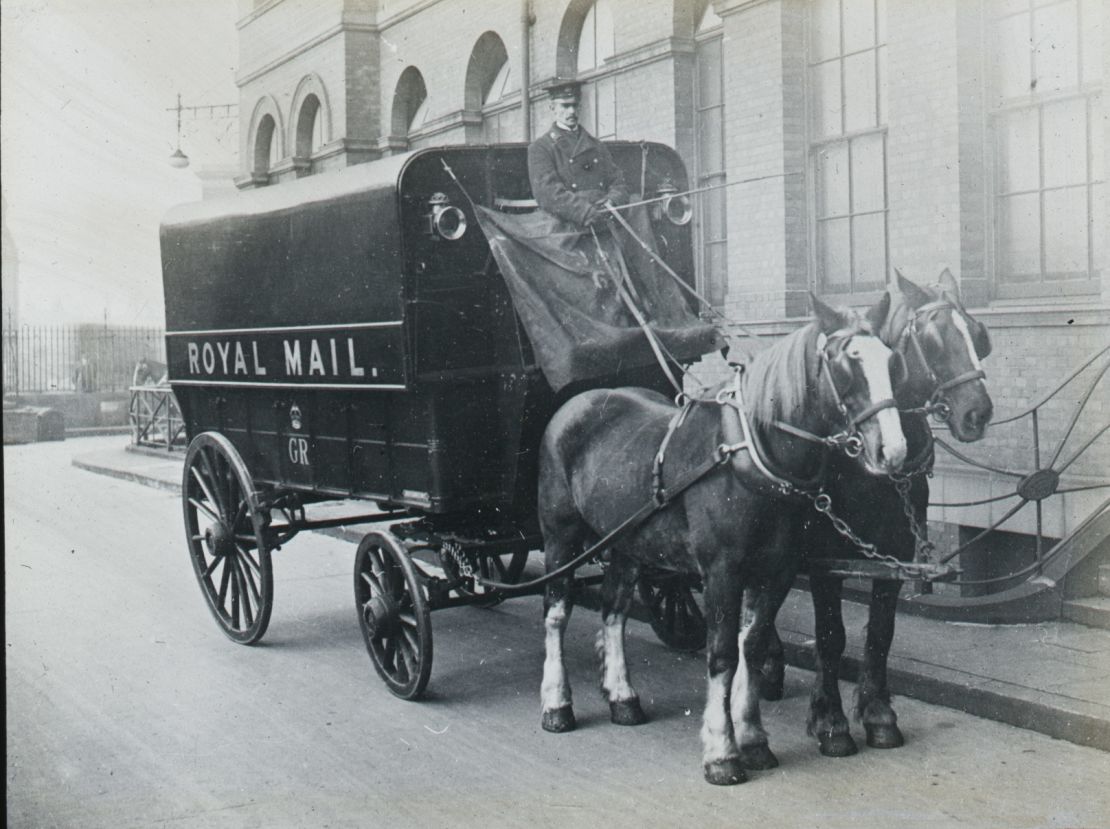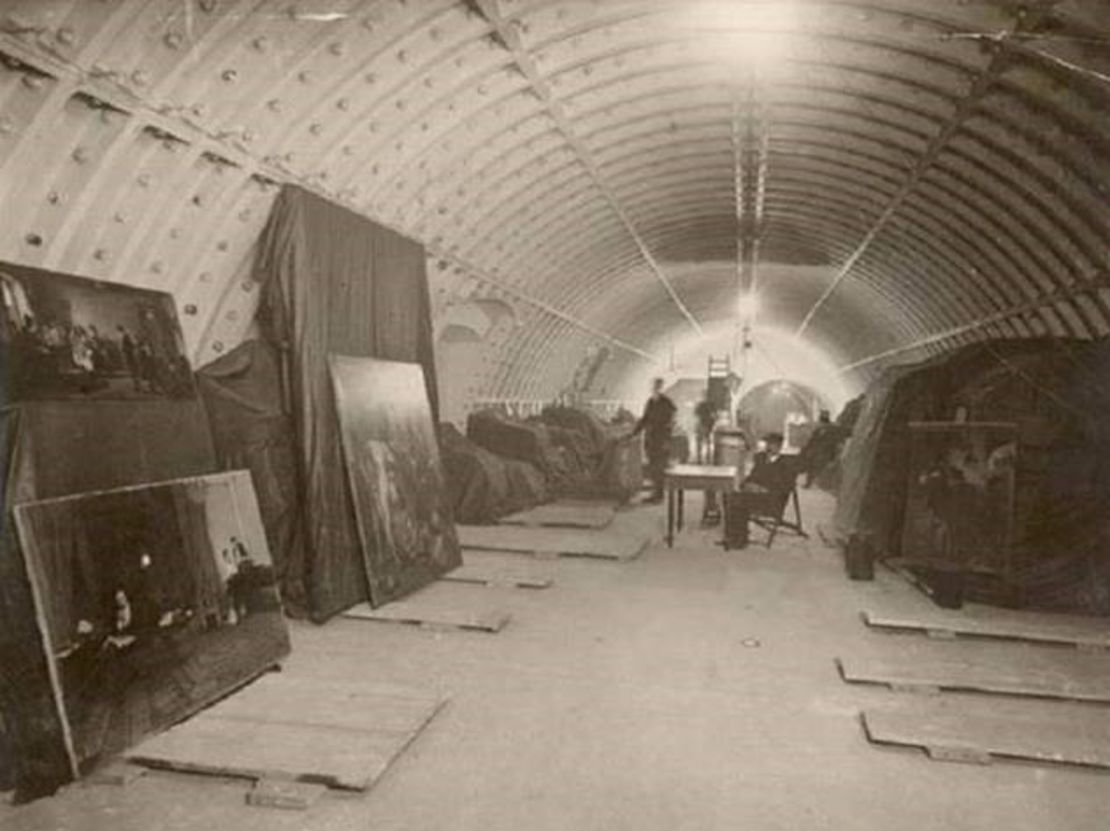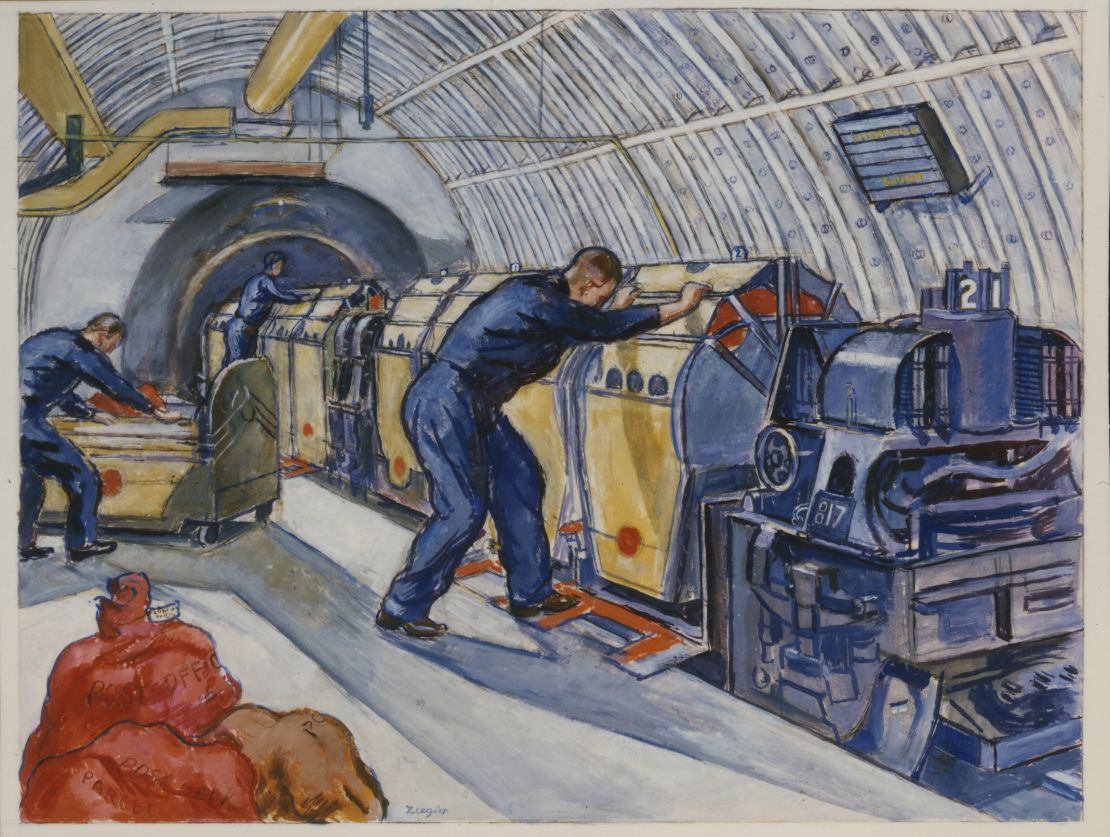Story highlights
Below London's busy streets lies the British Post Office's underground railway network -- also nicknamed the "Mail Rail". The tunnel ran from 1927 to 2003
In 2017, a section of the postal tunnel will be open to visitors as part of the new Postal Museum
Five years ago, some young thrill-seekers went underground in London. Collectively dubbing themselves “Consolidation Crew,” individually with names like “Urban Fox” and “Silent Motion,” their mission was to “explore everything.” What they did and still do is “place hack” – in other words, trespass on other people’s property.
In 2011, they made “an epic discovery of the highest order” – a “silent nocturnal city” some 25 meters (80 feet) below the streets of London, where the air was so still that calcium stalactites had formed. It felt, they wrote, ‘“like we were in an Indiana Jones movie – hot, sweaty and dank.”
Urban Fox and company went down a steep iron spiral staircase and into a series of extraordinary miniature man-made tunnels. Just as they had hoped, they’d found the defunct British Post Office underground railway network – the so-called “Mail Train.”
The line runs along Oxford Street, under the department store Selfridges and Cavendish Square, and snakes along for ten kilometers from Paddington in West London to Whitechapel in the East End.
For trainspotters, this was a fabulous, almost mythical slice of railwayana – “the least documented railway line this side of the old Iron Curtain.” Only Post Office staff ever went down to these secret subterranean tunnels, where the world’s first driverless electric trains rattled back and forth at speeds of up to 55 kph (35 mph) for most of the 20th century.
London’s underground legacy
Londoners have long been pioneers in building underground, usually out of necessity.
The Victorians began it; after the cholera epidemic of 1848-49 and “The Great Stink” of 1858, an elaborate sewer system was built under the city designed by the “Sewer King,” Joseph Bazalgette. “The Tube” begun in 1863 as direct response to traffic congestion and was the world’s first underground railway system. Steam locomotives first ran on the Metropolitan Line with air so noxious it was likened to crocodile breath.
Moving mail underground in London also started in the mid-19th century.
In 1861, a private company set up a cast-iron pneumatic tube system. Basically, a steam engine powered a large fan into a narrow tube: carriages were blown one way, then dragged back the other way by suction. Getting into a pneumatic carriage – as some test engineers did – must have been like jumping into a modern four-man bobsleigh.

In 1865, the Illustrated London News reported on the launch of a pneumatic line under Euston Station, top-hatted Victorians looking on earnestly at this wonder of the age. But after multiple experiments, it failed to attract investors and in 1908, British Post Office engineers visited Chicago to look at its new freight subway system – a labyrinth of tunnels criss-crossing under the city’s famous Loop for almost 100 kilometers (60 miles).
The British visitors were deeply impressed; the General Post Office – then a government department – decided that it would also go underground and electric; something had to be done to avoid the heavy, largely horse-drawn, London traffic of the early 1900s.
A haven for priceless art
The Post Office Railway Bill passed into law in 1913 and tunneling work commenced the following year. Coinciding with the outbreak of the First World War, it would take much longer than expected. Over 1000 tons of cast iron track had to be laid.

When the postal railway line finally opened in 1927, it was evidently a triumph, carrying up to four million letters a day between eight London sorting offices. And for 75 years, it never really stopped – trains running for 22 hours followed by two hours of maintenance every day.
But before that, the tunnels served another function – storing national art treasures from the British Museum, the Tate Gallery and other art institutions. In 1918, amid growing concern about German Zeppelin and bi-plane bombing raids, the British Museum moved the Parthenon Frieze and the Rosetta Stone into the postal tunnels and the National Portrait Gallery sent down over 600 paintings.
A ride on the Mail Train
The Postal Museum is rebranding itself and opening the secret tunnels to the public for the first time. From next spring, you will be able to take ride on a brand new miniature train under London. I was recently able to preview part of the tourist experience.
The cameraman and I were given hard hats and builders’ boots and guided down concrete steps. We descended slowly. First impressions were of an engineering marvel, literally bearing the weight of its history – great cast-iron ribbed tunnels, stretching out into the pitch black.
The tunnels were dug by hand, using pickaxes and shovels. Construction work took over three and half years and a few – an unspecified number – of laborers died in the process.
Clambering, crouched along the tracks (I banged my hard hat on the tunnel roof several times) there was an indefinable sense of abandonment and – it should be said – a certain monotony. Here were empty tunnels with a silent, eerie deadness – a catacomb without bodies.
Imagining London's underground Mail Rail in 3D
Most of the tunnels were less than three meters high (under 10 feet), in some places barely two meters. Whichever way we looked, the tunnels rose and fell, bending and curving out of sight. Down a short descent, one particular siding was nicknamed the “train graveyard” – it was filled with rusting rolling stock.
We had no way of telling whether it was day or night. There was just gloomy fluorescent lighting above a platform where mail was once quickly loaded and unloaded. At its peak, driverless trains pulled in here every seven minutes, zipping in and out, igniting a dust trail of blue sparks in the dark. Now, there was no rattle or hum or screech of brakes: we had to imagine it for ourselves.
The maintenance men
Ray Middlesworth, aged 59, has worked in the tunnels as a maintenance engineer for 30 years. He thinks of it as “a miniature half-scale Tube,” he says. “Other people say it’s spooky, claustrophobic but to us, it’s like our front room. ” And, like coal miners, a close camaraderie existed among the men.
Since 2003, when the system was finally shut down, there’s been a crew of just three maintenance men “walking the line” with torches and ensuring the tunnels aren’t flooded.

Ray’s fellow engineer, Graham Devitt, aged 55, has been “down” on the railway for 25 years off and on and is still astonished by its anonymity. “We run right under Central London and it’s amazing that nobody knew we here. A couple of thousand people worked in the postal sorting office above us and most of them weren’t even aware we were here.”
Middlesworth played with trains as a child. “I’ve got a big one now. I’ve upgraded,” he says with a laugh. Not for much longer – he’s retiring soon.
He is still clearly very much attached to his 1926 battery-powered maintenance locomotive. Now a grimy yellow, he refers to it affectionately as “the banana,” all six and a half tons of it. Ray squeezes nimbly into the driver’s cabin and will happily and proudly show anyone the controls, still a boy at heart with his train set.
The extraordinary fact is that for much of its working life (pre-helicopters that is), the Post Office Railway was almost certainly the quickest way to cross London – ten kilometers in just 14 minutes. Of course, no one ever used it like that. The line wasn’t designed to carry passengers, just mail. As an old General Post Office poster used to exclaim, it was all about the ‘“Speed, Speed, Speed” of delivery.
The Postal Museum Deputy Director, Tim Ellison likes to tell the Post Office story in contemporary terms – as “the social network of its day – an incredible service on a scale that most people today wouldn’t possibly be able to imagine.”
A crucial part of it was having its own bespoke underground London railway. Its existence remains a revelation.

































